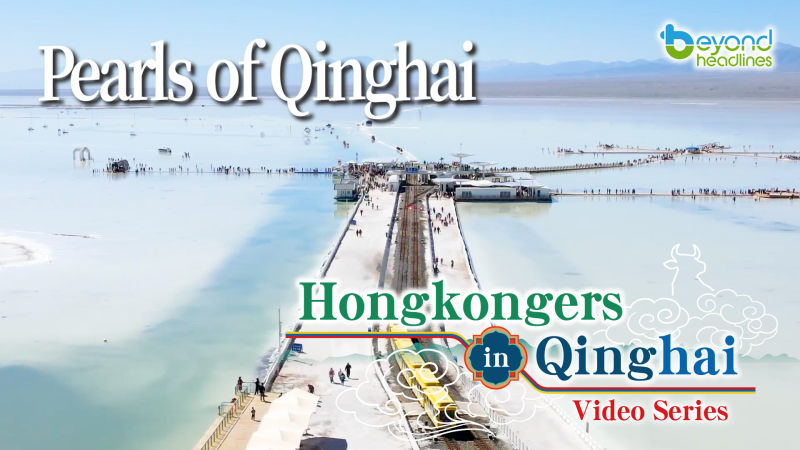I have known Nansha for more than 20 years. I have witnessed its transformation from a 9-square-kilometer area to an 800-square-kilometer community. At that time, I did not expect Nansha to develop into such a large economy. Nansha Golf Club has been very successful. For example, Feng Shanshan, the number one professional golfer in the women’s world rankings, trains here. A lot of youth training also takes place here.
[Kenneth Lam / CPPCC Member & CCGHKC Maritime Expert]
I am Kenneth Lam, a member of the Consultative Committee on Guangdong-Hong Kong Cooperation (Guangzhou Nansha), responsible for shipping affairs. I have been involved in ship financing in banks for more than 30 years. Last year, I started my own shipping company. Nansha is close to Hong Kong and have options in travelling, including taking a boat. Today, I went to Qingsheng Station from Kowloon Station, and it took me just about 40 minutes. It was quite convenient. In this ‘one-hour living circle,’ the high-speed rail significantly connects people’s lives and brings the two economies closer.
The geographical location of Nansha is quite advantageous. Nansha is at the center of the entire Greater Bay Area. Its economic and living circle has a very wide coverage, allowing access to diverse human resources. Nansha Port has a good potential in terms of pier business opportunities. It has incorporated many innovative technologies to support its development. Positioned in the Greater Bay Area, Nansha Port plays an important role in integrating and connecting with Hong Kong and Macao to support the internationalization of the country’s shipping industry. I’ve been to the pier a lot over the past two years. Automated piers are very different from traditional ones in terms of the equipment needed, the talents required, and the control mechanism. I frequently visit there to understand and sort out these differences.
Nansha and Hong Kong can create synergy on both hardware and software. Nansha has many geographical and land resource advantages, while Hong Kong leverages its soft power in international legal, taxation, and regulatory frameworks. Most transactions are settled in U.S. dollars, and the free circulation of currency in Hong Kong's free trade port allows for many opportunities to coordinate with Nansha’s development. When it comes to international trade transportation, more than 90% is shipped by sea. In addition to the containers often seen in the city, the transportation of many goods, bulk commodities, and energy products is conducted on a large scale.
The integrated development of shipping, finance, and trade is something our country greatly needs. Building an entire international shipping economy is a basic condition for the country to become a major shipping power. For the high-end shipping industry to develop with high quality and become a global shipping center in the future, it requires the joint improvement of finance, law, ship brokerage, management, insurance, and accounting. This is where Hong Kong excels, and by implementing these advantages in Nansha, we can establish a solid foundation for cooperation. This is Nansha. This is Hong Kong. Together with Shekou and Yantian of Shenzhen, Guangzhou, Dongguan, and Zhongshan, the entire Bay Area has numerous advantages. Although Nansha Port is situated inland rather than directly on the sea, it can coordinate effectively with shipping activities. This coordination is essential for enhancing the region's capabilities. The types of container ships account for one-sixth that of the global merchant fleet. To be a global shipping center, we need to control the entire global merchant fleet of 60,000 ships, with each ship on the sea collectively valued at USD1.4 trillion. Currently, only about 5% of these ships are powered by new energy sources, indicating significant room for development. The Greater Bay Area’s most pressing need for development now is the adoption of green fuels.
Natural gas is a transitional fuel. The future of ship fuel lies in methanol or ammonia. Substantial development of dock infrastructure is required. Once the infrastructure is in place and the fuel supply is secured, the next critical step is obtaining green fuel. Green fuel will derive from sustainable sources like solar energy and wind power. This should be considered from the perspective of the entire Greater Bay Area. We have many ports, including Hong Kong, Nansha of Guangzhou, and Yantian of Shenzhen, which can be integrated as a base for fuel-adding. Collaboration among all these ports is necessary to move forward. Nansha and Hong Kong both use their ports as the foundation of their economies. What is more important now is the soft ware, and I truly believe I can contribute significantly to this area, potentially fulfilling the role of a super-connector.
When talking about Nansha, I think it has an open mind. This openness makes me feel even more compelled to engage and communicate more with this place. It's like an old friend I've known for a long time. Much like true friendship, there is no need to be inseparable all the time, but when a problem arises, everyone works together to solve it. Our common goal is very consistent: we want to leverage our own strengths to see how we can best serve the needs of the country.






![[The China Venture] video series trailer](https://img.beyondheadlines.hk/articles/cover/20241015/63a29ad3566de0d493fd113d1c0ab660.jpg!w800)


![[The China Venture] EP14: Passing the Torch](https://img.beyondheadlines.hk/articles/cover/20241108/0d47ffb8b604acd22e3f38f1363949f5.jpg!w800)


